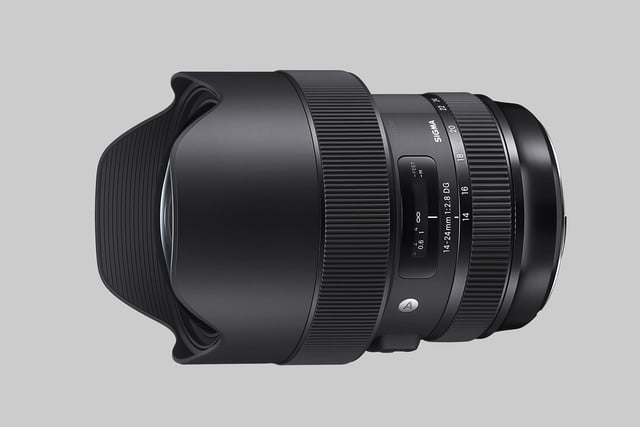Sigma’s high-end Art lens line has a new member. On Friday, February 9, Sigma announced the 14-24mm F2.8 DG HSM Art lens. Two weeks later, the company shared that the lens will ship in mid-March for $1,299. The company says the full frame lens is designed for 50-megapixel-plus cameras with a design focused on maximum sharpness for pairing up with that high resolution.
Sigma is claiming less than one-percent distortion in testing despite the lens’ wide angle. The company says the lens also has minimal chromatic aberration, flare, and ghosting. To back up those impressive claims, Sigma designed the lens with three FLD glass, three SLD glass, and three aspherical lens elements, and a total of 17 elements in 11 groups.
Despite the focus on optimal design, Sigma didn’t skip out on the autofocus system — the company says the lens’ autofocus offers both solid speed and accuracy. The autofocus can lock on a subject as close as 10.2 to 11 inches from the lens front. Like the other lenses in the series, the new wide-angle zoom offers a brighter-than-average aperture, with a F2.8 that can be maintained throughout the short zoom range.
To finish off the lens, the 14-24mm lens uses a dust and splash-proof design. For shooting in a variety of conditions, the weather-sealing extends to the mount connection, focus ring, zoom ring, and cover connection. Those coatings and multiple lens elements tip the scale at about 40 ounces or about 2.5 pounds, while the lens length hits 5.3 inches.
Sigma will launch the lens in mounts for Canon, Nikon, and Sigma, while a teleconverter is available for Sony E-Mounts. While a full frame lens, the Sigma can also be used on crop sensors, but without such a wide view. For Canon users, the lens is compatible with the company’s Lens Aberration Correction feature, while the Nikon mount uses an electromagnetic diaphragm.
The 14-24mm lens will join Sigma’s growing list of Art lenses, which also include the well-received 85mm f1.4 and a 135mm F1.8. The lens lists for $1,299 with shipping in mid-March. In the U.S., the lens will ship with a four-year warranty.
Updated on February 27: Added new pricing and availability information.





